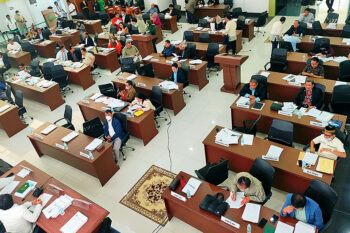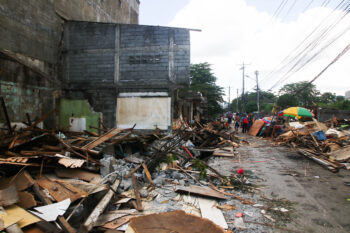
MATALAM, North Cotabato (MindaNews / 25 July) – President Ferdinand R. Marcos, Jr.’s State of the Nation Address (SONA) on July 24, his second, lasted for one hour and eleven minutes, got 68 applauses, and one standing ovation which happened when the SONA ended.
As an ordinary citizen, I have simple expectations based on my straight-forward understanding of the President’s SONA, or those that I and the common tao easily understand.
I rejoice when the economy is growing based on some significant indicators such as a 7.6% growth rate in 2022, the highest in 46 years. Such a figure is astounding and deserves a long applause. But wait. A 7.6% growth is always pleasing to the ears, per se. However, we would like to know the distribution of the 7.6% in terms of its direct benefits to the ordinary citizens.
For example, a 7.6% growth rate is nothing to the ordinary citizens of this country if it was just a growth rate representing performance of big businesses owned and controlled by 10% of the population. If this is growth rate in terms of socio-economic infrastructures, it speaks about equitable distribution of the gains derived from this bullish state of the economy. If this is growth rate representing an appreciable contribution from the agriculture and fishery sector, it means that the 60% of the population living within and below the poverty threshold are having a fair share of the economic pie.
Is this growth rate verifiable, especially how much goes to whom? Yes, it is. We just have to look at our annual GDP (gross domestic product) and what it says.
According to our 2022 GDP, the year when the 7.6% economic growth rate was achieved, the country’s GDP was valued at US$992 billion. This was how the different sectors contributed: repair of motor vehicles and motorcycles, 8.7 percent; financial and insurance activities, 9.8 percent; manufacturing, 4.2 percent; construction, 12.7 percent; and agriculture, forestry, and fishing, -0.3 percent. The remaining 64.6 percent was contributed by the wholesale and retail trade, export, and OFW remittances.
Why the agriculture, forestry, and fishery sector registered a negative growth rate may require a full SONA to explain. Of course, the pandemic may be one of the reasons that will be cited. But all sectors were affected by the pandemic except medicines like antibiotic, vitamins, paracetamol, mefenamic acid and vaccines – the demand for them increased a hundred-fold. Not to be excluded are alcohol and face masks.
The other thing that I wanted to hear from the President is about the Maharlika Investment Fund (MIF). The MIF was a creation of RA 11954 signed by the President on July 18, 2023. It is a sovereign wealth fund to be pooled from under-utilized government funds which shall be invested in income generating ventures. It is aimed at enhancing investment capital to create more wealth. The income that will be derived from such investments shall be used to support infrastructure development to improve the country’s connectivity and thereby attract more investors and create more jobs.
I have nothing against the Maharlika Investment Fund even if it is controversial in the beginning. Every citizen has the right to scrutinize this fund especially that it is to be sourced out from public funds. It is a bit comforting that pension funds from the Government Service Insurance System (GSIS), the Social Security System (SSS), and PhilHealth are spared.
The MIF is worth giving a chance if and when these conditions are met: a) the funds shall be guaranteed by a reliable insurance company, b) the MIF shall be managed by an investment firm with remarkable reputation and capability to salvage the funds when the investment performs poorly, c) one-third of the income from the MIF investments shall go to infrastructure development (this is already in the law), d) one-third shall be used to finance anti-poverty livelihood projects, and e) the remaining one-third shall be used to augment the income of minimum wage earners. The program for increasing agricultural productivity and enhancing social services have their allocations from the Annual General Appropriations Act.
Any public investment that is designed to generate more wealth, create more jobs, and improve the quality of life of the marginalized sector of the society is worth trying. When the economy improves and the quality of life of the people goes with it, the MIF has not failed us.
I love to hear statistics that tell us about our social and economic status. They give us the real state of the nation.
(MindaViews is the opinion section of MindaNews. Maugan P. Mosaid holds a doctorate degree in rural development. He is a planning consultant and teaches Statistics and Methods of Research in the graduate school. He can be contacted at mauganmosaid6@gmail.com)







